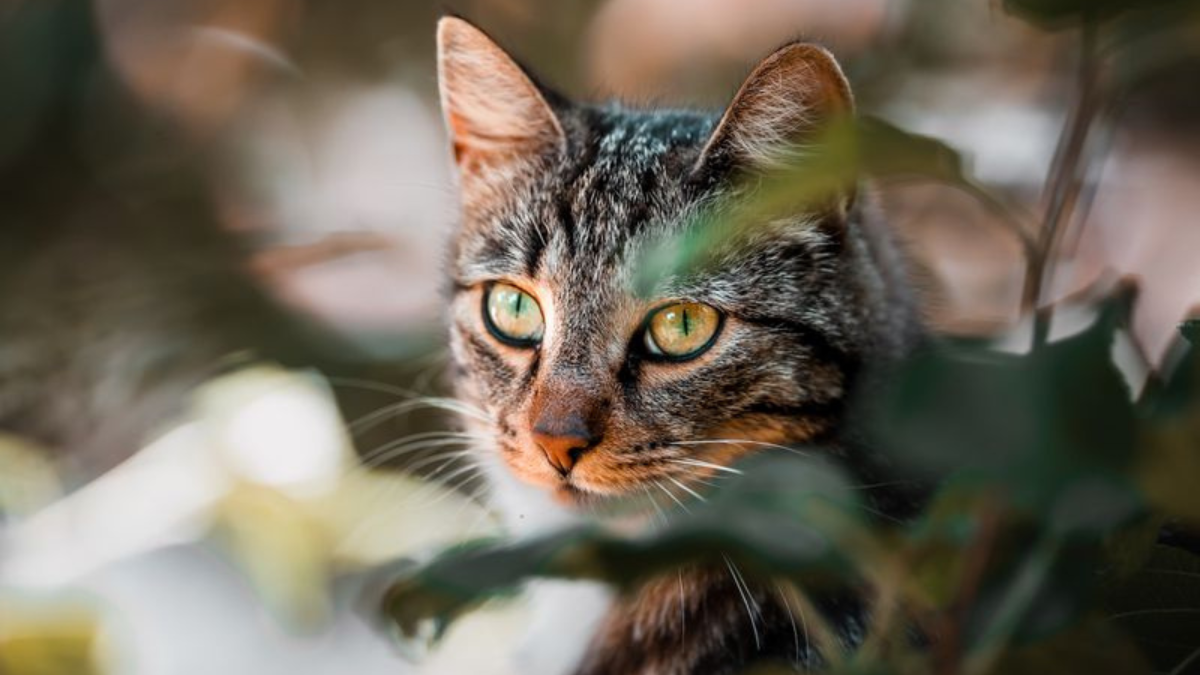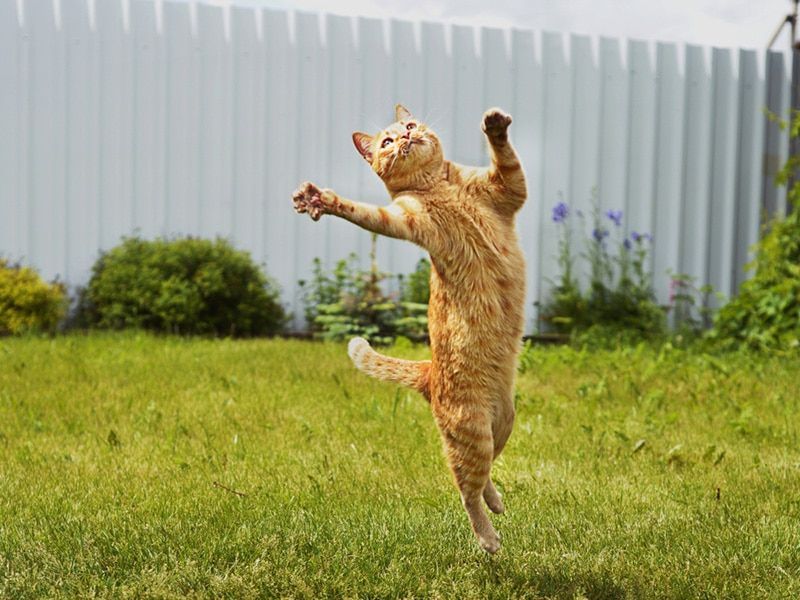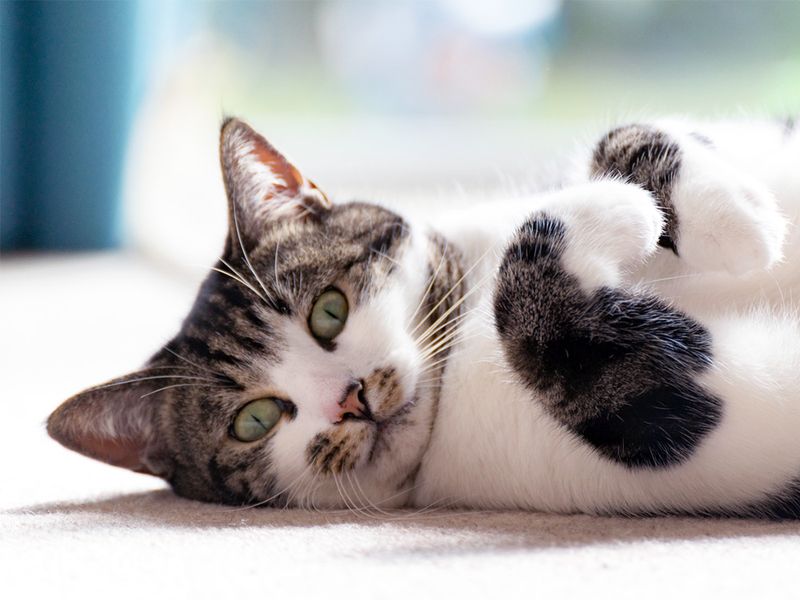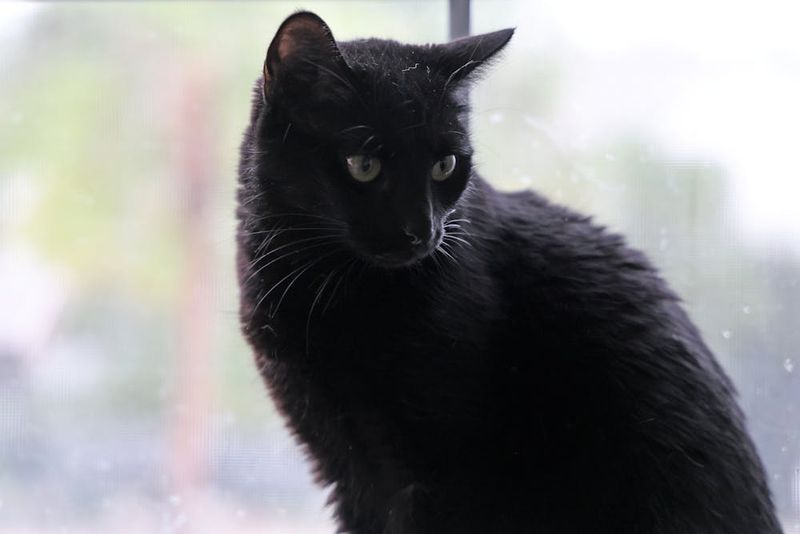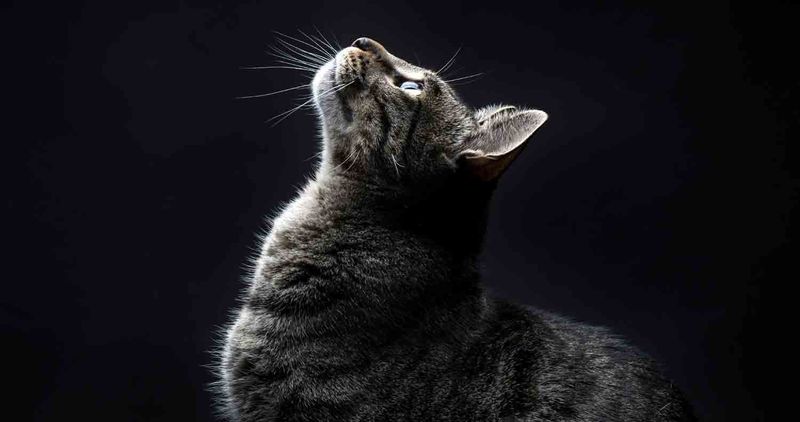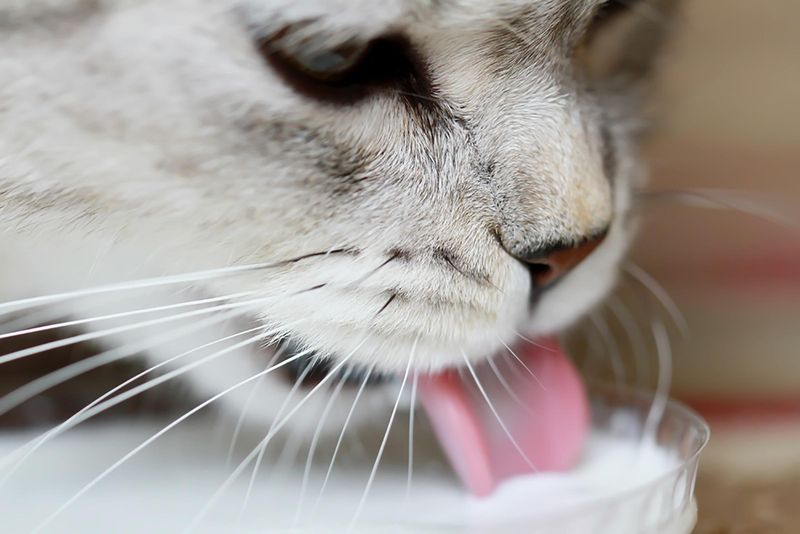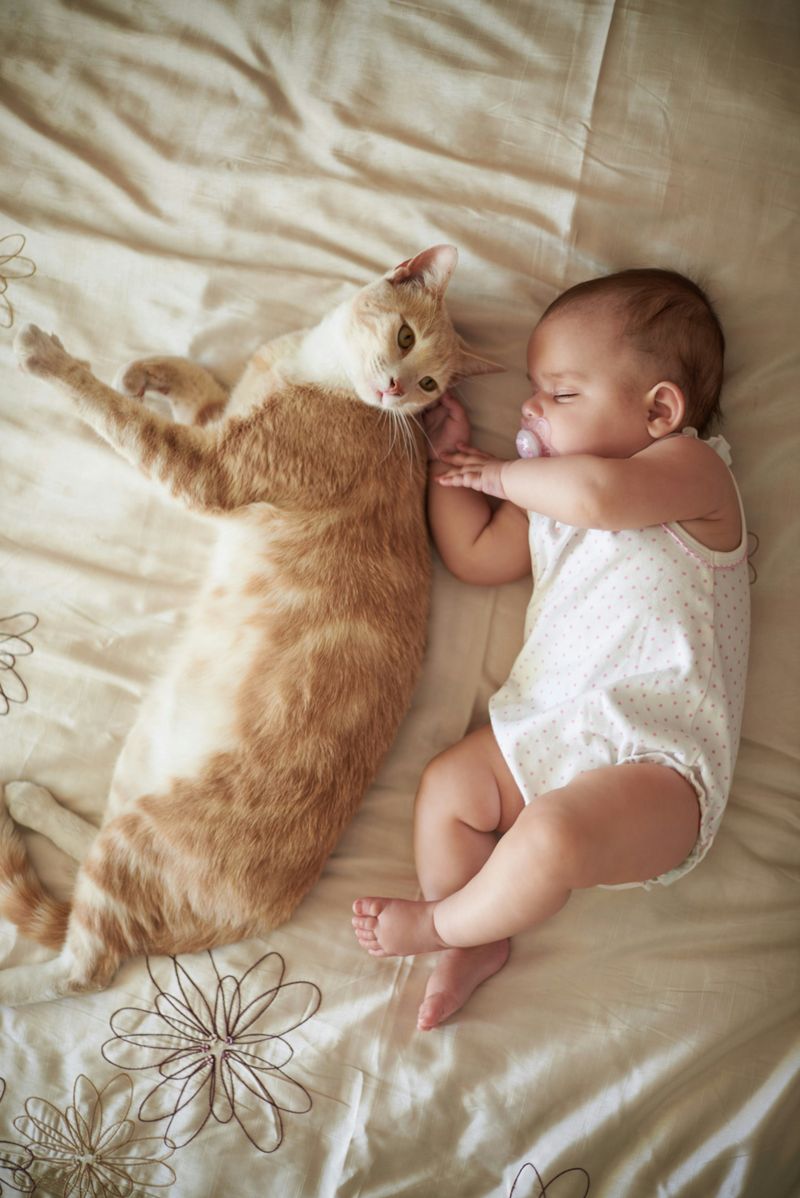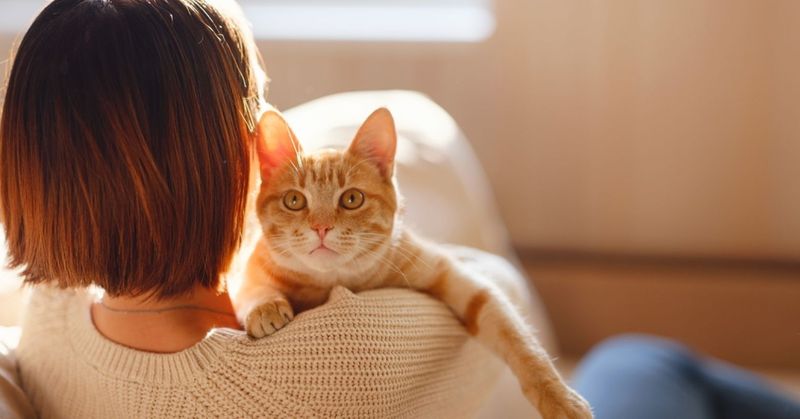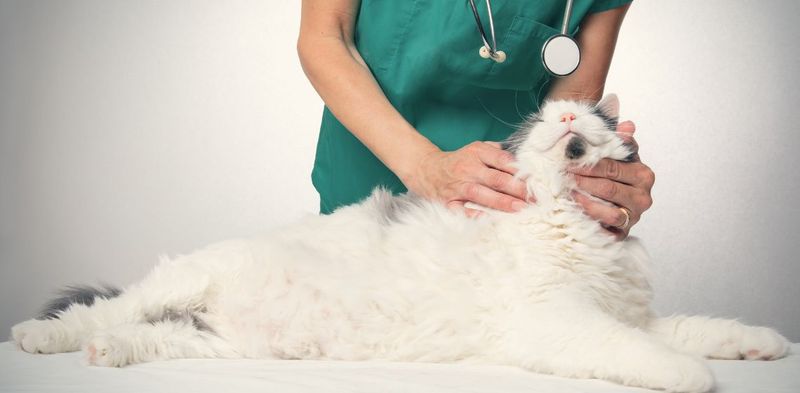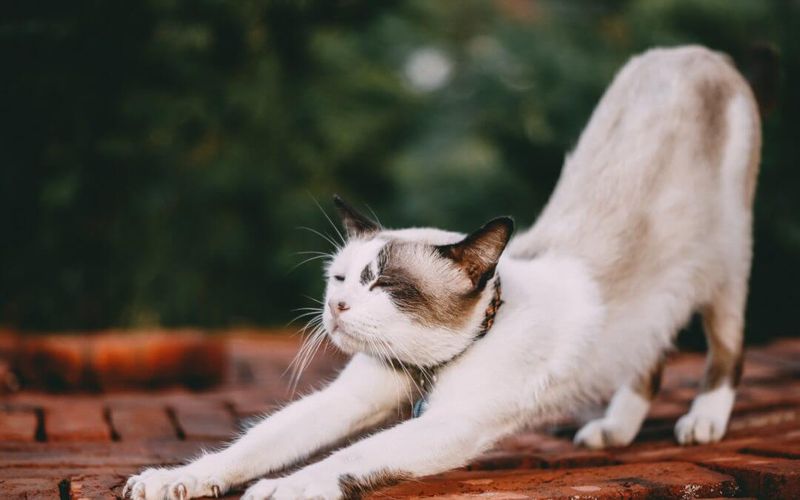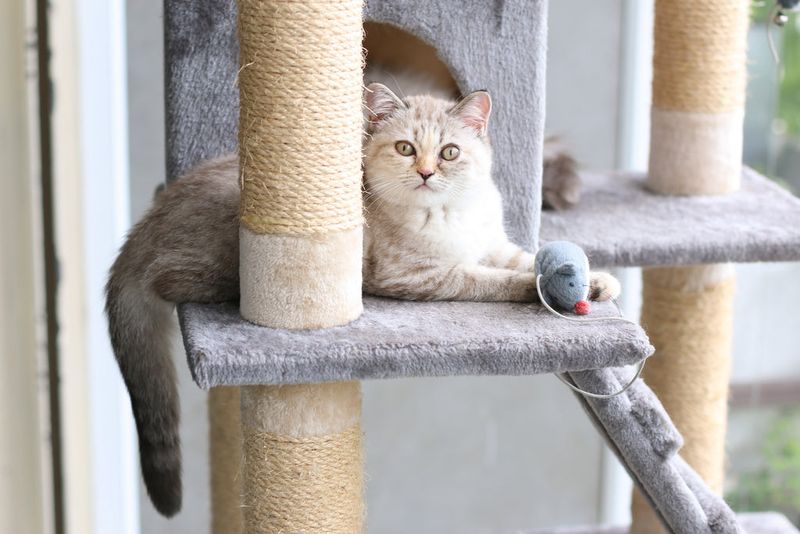📖 Table of Content:
- 1. Cats Always Land on Their Feet
- 2. Cats Hate Water
- 3. Cats Can’t Be Trained
- 4. Black Cats Bring Bad Luck
- 5. Cats See in Complete Darkness
- 6. Milk is Good for Cats
- 7. Purring Always Means Happiness
- 8. Cats Steal Babies’ Breath
- 9. Pregnant Women Must Avoid Cats
- 10. Cats Have Nine Lives
- 11. Cats Are Aloof and Unaffectionate
- 12. Cats Are Nocturnal
- 13. Cats and Dogs Are Natural Enemies
- 14. Cats Don’t Need Veterinary Care
- 15. Declawing Is Like a Manicure
- 16. Cats Should Have One Litter Before Spaying
- 17. Cats Can’t Get Along With Other Cats
- 18. Indoor Cats Don’t Need Exercise
Stories about cats often blur the line between fact and folklore, with tales ranging from their supposed nine lives to their uncanny ability to always land on their feet. These myths have woven themselves into culture, shaping how people perceive and relate to their feline companions. Many of these beliefs sound convincing but may not hold up under closer scrutiny.
Cats have inspired countless legends due to their mysterious and independent nature. Their behaviors, sometimes misunderstood, have sparked imaginative explanations and superstitions that persist today. Separating truth from myth helps clarify the reality behind these enchanting animals.
Understanding what’s true about cats can improve how they are cared for and appreciated. By debunking popular misconceptions, a clearer picture emerges of their unique qualities and needs. This clarity fosters better relationships between humans and their feline friends.
1. Cats Always Land on Their Feet
Felines possess an incredible righting reflex that helps them twist mid-air to land on their paws. However, this remarkable ability isn’t foolproof! Cats need sufficient height to complete their rotation, and falls from very low or extremely high distances can still result in serious injuries. Many veterinarians actually report a “high-rise syndrome” where cats surviving falls from great heights sometimes fare better than those falling from medium heights. The reality is that while cats have evolved impressive reflexes, they’re not magical beings with perfect landing abilities. They can and do get injured from falls, especially when caught off-guard or falling from awkward positions.
2. Cats Hate Water
The notion that all felines despise water simply doesn’t hold up to scrutiny. While many domestic cats avoid getting soaked, plenty of exceptions exist across different breeds and individual personalities. Turkish Vans, nicknamed “swimming cats,” naturally enjoy paddling around in water. Maine Coons, Bengals, and Abyssinians often show curiosity or even enthusiasm toward water play. Some ordinary house cats happily bat at running faucets or shower drips. What cats typically dislike is being forcibly submerged or getting unexpectedly wet. Their cautious nature around water likely stems from evolutionary history, as wet fur loses insulating properties and becomes uncomfortably heavy.
3. Cats Can’t Be Trained
Contrary to popular belief, cats are highly trainable animals. The key difference lies in motivation – while dogs often work for praise, cats typically respond better to food rewards and positive reinforcement. Many cat owners successfully teach their feline companions to perform tricks, use toilets instead of litter boxes, walk on leashes, and respond to commands. Clicker training works particularly well with cats, creating clear communication between pet and owner. The misconception about untrainable cats likely persists because of their independent nature. Training requires understanding feline psychology – short, consistent sessions with immediate rewards yield the best results, rather than expecting dog-like obedience.
4. Black Cats Bring Bad Luck
The superstition surrounding black cats dates back to the Middle Ages when they became tragically associated with witchcraft. This unfounded fear has persisted for centuries, making black cats the least likely to be adopted from shelters. Across different cultures, black cats actually symbolize good fortune. In Japan, they’re believed to attract potential suitors for single women. British sailors once considered black cats lucky on ships, while in ancient Egypt, all cats were revered, regardless of color. Modern research shows black cats typically have friendly, affectionate personalities. The melanin that creates their sleek ebony coats may even provide health advantages, potentially making them more resistant to certain diseases than lighter-colored felines.
5. Cats See in Complete Darkness
Cats possess extraordinary night vision that far surpasses human capabilities, but they can’t actually see in total darkness. Their eyes contain specialized structures that maximize available light – a reflective layer called the tapetum lucidum and vertical pupils that open extremely wide in dim conditions. These adaptations allow cats to function with about one-sixth the light humans need. The glowing effect we see in feline eyes at night happens when light bounces off their tapetum, enhancing their light sensitivity by up to 50%. However, when absolutely no light exists, cats are just as blind as we are. They rely on their impressive whiskers and acute hearing to navigate truly dark environments.
6. Milk is Good for Cats
The classic image of a contented cat lapping up a saucer of milk couldn’t be more misleading. Most adult cats are actually lactose intolerant! After weaning, cats typically lose the enzyme lactase, which is necessary to properly digest milk sugar. Feeding dairy to your grown feline friend often results in uncomfortable digestive issues, including diarrhea, vomiting, and stomach pain. The creamy treat that seems like a kindness can cause hours of discomfort for your pet. If your cat enjoys milk, specially formulated lactose-free cat milk is available at pet stores. Better yet, plain water remains the healthiest beverage choice for cats, keeping them properly hydrated without digestive complications.
7. Purring Always Means Happiness
The soothing rumble of a purring cat seems like the ultimate sign of feline contentment. Yet veterinary science reveals purring serves multiple purposes beyond expressing pleasure. Cats often purr when injured, frightened, giving birth, or even dying. Research suggests purring may have healing properties. The vibrations occur at frequencies between 25-150 Hz – a range shown to promote tissue regeneration and bone growth. This self-soothing mechanism might explain why cats recover from injuries faster than many animals. Reading a cat’s emotional state requires looking at the whole picture – body language, ear position, and tail movements tell the complete story. A purring cat with flattened ears and dilated pupils likely feels stressed, not blissful.
8. Cats Steal Babies’ Breath
This bizarre medieval superstition claimed cats would suffocate infants by sucking away their breath or soul. The myth likely originated from cats’ tendency to seek warmth near sleeping people, including babies, or from tragic cases of sudden infant death syndrome where cats were present but not responsible. No evidence supports the notion that cats harm babies intentionally. Modern veterinary and pediatric experts agree cats pose no breathing risk to infants. However, responsible supervision remains important, as with any pet-child interaction. Cats are actually drawn to babies for innocent reasons – the warmth of a sleeping child, the smell of milk, or simple curiosity about the new family member. With proper introductions and monitoring, cats and babies typically coexist peacefully.
9. Pregnant Women Must Avoid Cats
The concern centers around toxoplasmosis, an infection caused by a parasite sometimes found in cat feces. While this infection can indeed harm developing fetuses, the risk has been dramatically overblown. Indoor cats who don’t hunt or eat raw meat rarely carry the parasite. Most women who’ve had cats for years have already developed immunity. Simple precautions like having someone else clean the litter box daily, wearing gloves for gardening, and washing hands after handling cats eliminate virtually all risk. The Centers for Disease Control notes that people are more likely to contract toxoplasmosis from undercooked meat or unwashed vegetables than from cats. Surrendering beloved pets during pregnancy is unnecessary and can cause emotional distress.
10. Cats Have Nine Lives
The enduring myth of cats having nine lives stems from their remarkable agility and survival instincts. Throughout history, people witnessed cats escaping seemingly deadly situations – surviving high falls, escaping predators, or finding their way home across vast distances. This folkloric belief appears across cultures with varying numbers. English-speaking regions settled on nine, possibly relating to nine being considered a lucky number in medieval Europe. Ancient Egyptians associated cats with their nine-member pantheon of gods. While completely fictional, this myth does acknowledge something true about feline resilience. Cats possess extraordinary reflexes, flexibility, and instincts that help them survive dangerous situations better than many animals – but they absolutely have just one precious life.
11. Cats Are Aloof and Unaffectionate
The stereotype of the distant, uncaring cat persists despite evidence to the contrary. Scientific studies show cats form genuine attachments to their human caregivers, similar to those observed in dogs and human infants. They experience separation anxiety and seek comfort from preferred humans during stressful situations. Cats simply display affection differently from dogs. Their subtle expressions – slow blinking, gentle headbutts, kneading, and bringing “gifts” – are easily missed by those expecting canine-style enthusiasm. Cultural expectations often lead to misinterpreting these quieter displays of love. Individual personality varies enormously among cats, just as with humans. While some cats are naturally reserved, many are extraordinarily demonstrative, following their people everywhere and demanding constant attention and physical contact.
12. Cats Are Nocturnal
Contrary to popular belief, domestic cats aren’t truly nocturnal creatures. They’re actually crepuscular – most active during dawn and dusk when their natural prey would be out. This explains those energetic 5 AM wake-up calls many cat owners experience! Wild cat ancestors developed this activity pattern for hunting in low-light conditions while avoiding larger predators. Domestic cats retain this instinctual schedule, though many adapt somewhat to their humans’ routines. Indoor cats often modify their natural rhythms to be more active when their people are home. Understanding this biological programming helps explain why your cat might zoom around the house at twilight hours. Providing interactive playtime during these natural activity peaks can help prevent nighttime disruptions.
13. Cats and Dogs Are Natural Enemies
Cartoons and idioms have reinforced the idea that cats and dogs are born adversaries, but biology tells a different story. Neither species has an instinctual hatred of the other – their potential conflicts stem from mismatched communication styles rather than inherent animosity. Dogs descended from pack-hunting wolves with direct, energetic social signals. Cats evolved as solitary hunters with subtle, nuanced body language. When a friendly dog bounds toward a cat with a wagging tail, the cat often perceives a threat rather than a greeting. Countless households prove that these species can become best friends when properly introduced. Early socialization, respect for each animal’s space, and understanding their different communication needs allow for harmonious multi-pet homes with both cats and dogs.
14. Cats Don’t Need Veterinary Care
The misconception that cats require less medical attention than dogs puts countless felines at risk. Cats actually need regular veterinary care, but often hide illness expertly – an evolutionary adaptation to avoid appearing vulnerable to predators. By the time cats show obvious symptoms, conditions have frequently progressed to serious stages. Regular check-ups allow veterinarians to detect subtle changes in weight, dental health, organ function, and behavior that indicate developing problems before they become critical. Preventative care, including vaccinations, parasite control, dental cleaning, and spaying/neutering, significantly extends feline lifespans. The myth of self-sufficient cats likely persists because they groom themselves meticulously and use litter boxes, creating an illusion of complete independence that doesn’t extend to their medical needs.
15. Declawing Is Like a Manicure
Far from being a simple nail trim, declawing involves amputating the last bone of each toe – equivalent to cutting off human fingertips at the first knuckle. This surgical procedure removes not just the claw but part of the digit itself, permanently altering a cat’s anatomy and natural behaviors. The physical consequences can include chronic pain, nerve damage, bone spurs, infection, and back problems from altered gait. Psychological effects often include increased biting and litter box avoidance due to paw pain when digging. Modern alternatives to declawing include regular nail trimming, soft plastic nail caps, appropriate scratching surfaces, and positive reinforcement training. The procedure is banned as animal cruelty in many countries and several U.S. states, reflecting growing recognition of its harmful effects.
16. Cats Should Have One Litter Before Spaying
The outdated belief that female cats benefit from having kittens before being spayed has been thoroughly debunked by veterinary science. No health or behavioral advantages come from allowing a cat to reproduce before sterilization – in fact, quite the opposite. Spaying before the first heat cycle significantly reduces the risk of mammary tumors and eliminates the possibility of uterine infections and reproductive cancers. Early spaying also prevents unwanted behaviors associated with heat cycles, such as yowling, spraying, and escape attempts. With millions of homeless cats euthanized yearly due to overpopulation, responsible pet ownership includes early spaying and neutering. Modern veterinary practices make these procedures safe even for kittens as young as 8-12 weeks old.
17. Cats Can’t Get Along With Other Cats
The solitary hunter reputation of cats has fueled the misconception that they’re inherently antisocial with their own kind. While domestic cats don’t form packs like dogs, they naturally establish complex social structures when resources allow. Feral cat colonies demonstrate sophisticated social dynamics, with related females often sharing kitten-raising responsibilities. Domestic cats frequently form deep bonds with feline housemates, engaging in mutual grooming, playing together, and sleeping in cozy piles. Successful multi-cat households depend on proper introductions, adequate resources, and appropriate environmental enrichment. Most cats can learn to peacefully coexist or even become friends when their territorial needs are respected and positive associations are established gradually.
18. Indoor Cats Don’t Need Exercise
The belief that indoor living eliminates a cat’s need for physical activity couldn’t be further from truth. Wild cats travel miles daily hunting prey, and domestic cats retain these instinctual energy requirements regardless of their living environment. Without adequate exercise, indoor cats commonly develop obesity, diabetes, joint problems, and destructive behaviors born from frustration. Physical activity is crucial for their physical and mental wellbeing, helping prevent depression and anxiety that can manifest as over-grooming or aggression. Creating an enriched indoor environment with climbing opportunities, interactive toys, and daily play sessions mimicking hunting behaviors satisfies these natural needs. Just 10-15 minutes of engaged play several times daily can dramatically improve an indoor cat’s quality of life and prevent health issues.
